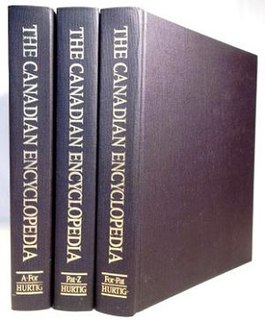 W
WThe Canadian Encyclopedia is a source of information on Canada published by Historica Canada of Toronto. Articles appear in English and French. It is available online, at no cost. The Canadian Encyclopedia includes 14,000 articles in each language on numerous subjects including history, popular culture, events, people, places, politics, arts, First Nations, sports and science.
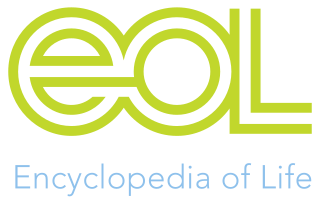 W
WThe Encyclopedia of Life (EOL) is a free, online collaborative encyclopedia intended to document all of the 1.9 million living species known to science. It is compiled from existing databases and from contributions by experts and non-experts throughout the world. It aims to build one "infinitely expandable" page for each species, including video, sound, images, graphics, as well as text. In addition, the Encyclopedia incorporates content from the Biodiversity Heritage Library, which digitizes millions of pages of printed literature from the world's major natural history libraries. The project was initially backed by a US$50 million funding commitment, led by the MacArthur Foundation and the Sloan Foundation, who provided US$20 million and US$5 million, respectively. The additional US$25 million came from five cornerstone institutions—the Field Museum, Harvard University, the Marine Biological Laboratory, the Missouri Botanical Garden, and the Smithsonian Institution. The project was initially led by Jim Edwards and the development team by David Patterson. Today, participating institutions and individual donors continue to support EOL through financial contributions.
 W
WEncyclopédie, ou dictionnaire raisonné des sciences, des arts et des métiers, better known as Encyclopédie, was a general encyclopedia published in France between 1751 and 1772, with later supplements, revised editions, and translations. It had many writers, known as the Encyclopédistes. It was edited by Denis Diderot and, until 1759, co-edited by Jean le Rond d'Alembert.
 W
WEncyclopédie berbère is a French-language encyclopaedia dealing with subjects related to the Berbers. It was launched in 1984 under the aegis of UNESCO and is published by Editions Edisud. Its first editor-in-chief was Gabriel Camps. After his death in 2002, he was succeeded by Salem Chaker, Professor of Berber languages at the Aix-Marseille University Volume 27 appeared in 2005. Encyclopédie berbère joined from fascicle XXX, the publishing house Peeters Publishers, already engaged in Berber studies field.
 W
WThe Encyclopédie méthodique par ordre des matières was published between 1782 and 1832 by the French publisher Charles Joseph Panckoucke, his son-in-law Henri Agasse, and the latter's wife, Thérèse-Charlotte Agasse. Arranged by disciplines, it was a revised and much expanded version, in roughly 210 to 216 volumes, of the alphabetically arranged Encyclopédie, edited by Denis Diderot and Jean le Rond d'Alembert. The full title was L'Encyclopédie méthodique ou par ordre de matières par une société de gens de lettres, de savants et d'artistes; précédée d'un vocabulaire universel, servant de table pour tout l'ouvrage, ornée des portraits de MM. Diderot et d'Alembert, premiers éditeurs de l'Encyclopédie.
 W
WFocus is an encyclopedia first published in Swedish in five volumes 1958–1960, later extended with additional volumes, republished in several editions, and translated to Danish, Norwegian, French, Portuguese, and Spanish. Based on inspiration from the richly illustrated 1947 edition of the American World Book Encyclopedia, the plan for Focus as conceived by Sven Lidman was based on two principles:a set of highly instructional and internationally reusable illustrations should be produced first, to which text could be written later in various languages, and the basic encyclopedia should be compact to which specialized add-on volumes from a series could be combined, making it easier to cover different market segments.
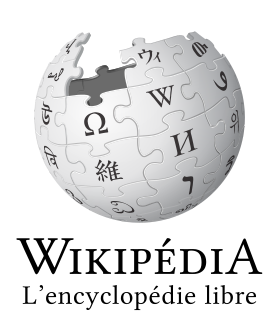 W
WThe French Wikipedia is the French-language edition of the free online encyclopedia Wikipedia. This edition was started on 23 March 2001, and has 2,270,050 articles as of 21 November, 2020, making it the fifth-largest Wikipedia overall, after the English-, Cebuano-, Swedish- and German-language editions, the largest Wikipedia edition in a Romance language. It has the third-largest number of edits, and ranks 6th in terms of depth among Wikipedias. It was also the third edition, after the English Wikipedia and German Wikipedia, to exceed 1 million encyclopedia articles: this occurred on 23 September 2010. In April 2016, the project had 4657 active editors who made at least five edits in that month.
 W
WThe Grand dictionnaire universel du XIXe siècle, often called the Grand Larousse du dix-neuvième, is a French encyclopedic dictionary. It was planned, directed, published, and to a substantial degree written by Pierre Larousse, though he also relied on anonymous fellow contributors and though he died in 1875, before its completion. The publication of the Grand dictionnaire universel in 15 volumes of 1500 pages extended from 1866 to 1876. Two supplements were published in 1877 and 1890.
 W
WThe Histoire philosophique et politique des établissements et du commerce des Européens dans les deux Indes, more often known simply as Histoire des deux Indes, is an encyclopaedia on commerce between Europe and the Far East, published anonymously in Amsterdam in 1770 and attributed to Abbot Guillaume Thomas Raynal. It achieved considerable popularity and went through numerous editions. The third edition, published in 1781, was censored in France.
 W
WThe Histoire Naturelle, générale et particulière, avec la description du Cabinet du Roi is an encyclopaedic collection of 36 large (quarto) volumes written between 1749–1804, initially by the Comte de Buffon, and continued in eight more volumes after his death by his colleagues, led by Bernard Germain de Lacépède. The books cover what was known of the "natural sciences" at the time, including what would now be called material science, physics, chemistry and technology as well as the natural history of animals.
 W
WThe Historical Dictionary of Switzerland is an encyclopedia on the history of Switzerland that aims to take into account the results of modern historical research in a manner accessible to a broader audience.
 W
WLarousse Gastronomique is an encyclopedia of gastronomy. The majority of the book is about French cuisine, and contains recipes for French dishes and cooking techniques. The first edition included few non-French dishes and ingredients; later editions include many more. The book was originally published by Éditions Larousse in Paris in 1938.
 W
WLe Grand Dictionnaire historique was an encyclopedia originally compiled by the Catholic priest and theologian Louis Moréri (1643–1680). By later standards, it was highly specialized, for nearly all of its entries were on geographical and historical subjects, but it marked the start of a flood of other dictionaries and encyclopedias in Europe's vernaculars. In addition to being successful in its own right, Moréri’s Grand Dictionnaire served as a springboard and foil for Pierre Bayle’s Dictionnaire Historique et Critique (1697).
 W
WThe Nouveau Larousse illustré was an illustrated French language encyclopedia published by Éditions Larousse between 1897 and 1904, in 7 volumes and a supplement. It was essentially a scaled-down version of the Grand dictionnaire universel du XIXe siècle of Pierre Larousse, but updated and written in a more neutral, scientific style under the editorship of Claude Augé (1854−1924).
 W
WThe Occitan Wikipedia is the Occitan language version of Wikipedia. The Occitan version of Wikipedia had 85,475 articles on 18 October 2013.
 W
WOrbis Pictus, or Orbis Sensualium Pictus, is a textbook for children written by Czech educator John Amos Comenius and published in 1658. It was the first widely used children's textbook with pictures, published first in Latin and German and later republished in many European languages. The revolutionary book quickly spread around Europe and became the defining children's textbook for centuries.
 W
WLe Petit Larousse Illustré, commonly known simply as Le Petit Larousse, is a French-language encyclopedic dictionary published by Éditions Larousse. It first appeared in 1905 and was edited by Claude Augé, following Augé's Dictionnaire complet illustré (1889). The one-volume work has two main sections: a dictionary featuring common words and an encyclopedia of proper nouns. Le Petit Larousse 2007 includes 150,000 definitions and 5,000 illustrations. A Spanish-version El Pequeño Larousse Ilustrado and an Italian version Il Piccolo Rizzoli Larousse have also been published.
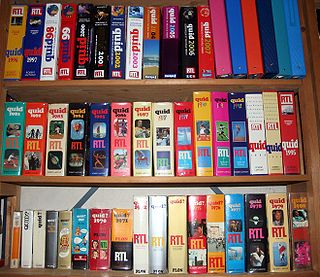 W
WQuidis a French encyclopedia, established in 1963 by Dominique Frémy. It was published annually between 1963 and 2007, first by Plon (1963-1974) and later by Éditions Robert Laffont (1975-2007), and was the most popular encyclopedic reference work in France.
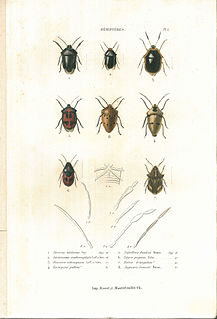 W
WLes Suites à Buffon is a French 19th-century scientific publication.
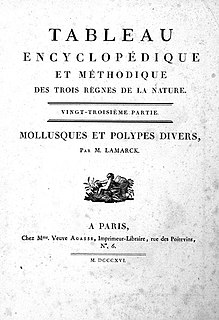 W
WThe Tableau encyclopédique et méthodique des trois regnes de la nature was an illustrated encyclopedia of plants, animals and minerals, notable for including the first scientific descriptions of many species, and for its attractive engravings. It was published in Paris by Charles Joseph Panckoucke, from 1788 on. Although its several volumes can be considered a part of the greater Encyclopédie méthodique, they were titled and issued separately.